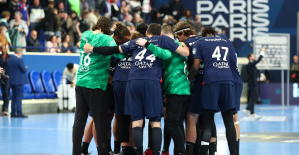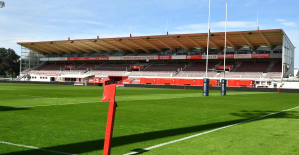At the time of year when everything is bare and gray outside, Dieter Fuchs is working towards a greener future. Since November he has had pits dug all over Bonn, at least twelve cubic meters in size. His new protégés need that much space to be able to survive between exhaust fumes and asphalt. It's literally a tough patch, but Fuchs and his team are doing a lot to make it through - and so that it gets bigger every season. Fuchs heads the office for urban greenery, he is responsible for more than 125,000 trees in Bonn.
Metropolises must reforest: This is demanded in every urban development agenda, also due to countless studies that demonstrate the versatile abilities of urban trees. Trees protect against wind and noise, filter fine dust, carbon dioxide and ozone from the air, produce oxygen, offer animals a place to live and people a quality of life.
Especially in summer, because "trees work like natural air conditioning systems," says Christian Albert, head of the working group "Environmental Analysis and Planning in Metropolitan Areas" at the Geographical Institute of the Ruhr University Bochum. "In this way, they can help us to adapt cities to climate change - especially when it comes to combating heat islands."
A team from the Institute for Global Health in Barcelona recently calculated how elementary this cooling effect can be in the journal "The Lancet". The researchers evaluated data from 93 major European cities, including seven German cities. Result: If the area covered by treetops in these cities were doubled from the current average of 15 to 30 percent, the number of heat-related deaths could be reduced by up to 40 percent.
In Germany, the effect would be greatest in Munich: 1.6 premature deaths per 100,000 inhabitants could be prevented there. Bringing more trees into the cities will ultimately become vital. Bonn is already an above-average green city, but: "Around 25 percent of our streets are treeless," says office manager Fuchs. How can this be changed, and what needs to be considered?
The realization that green cities are healthier is not exactly new. As early as the 18th century, planners began to equip inner cities with parks so that people could relax there. In 1898, a Briton invented the garden city as an alternative to the stuffy, dirty city. The fact that this model did not catch on is due to another planning ideal: the car-friendly city.
The street canyons from the 1950s are now occupying experts nationwide. Dieter Fuchs also heads the urban trees working group at the German Garden Office Managers' Conference (GALK), the association of municipal green space administrations. Therefore, he has a good overview of the "tree concepts" that are being developed everywhere, in Leipzig, Bochum, Düsseldorf. The cities want to record how many streets there are no trees and reforest them.
Laypersons simply imagine the solution: dig a hole, plant a tree, let it grow. But it's not that easy. The biggest problem, Fuchs describes, is the lack of space: whether in narrow old towns or in the ground, which is full of pipes for gas, water and electricity. In addition, there were angry residents who did not want to sweep the leaves and protested as soon as a parking lot was to be converted. Fuchs' conclusion: "If you actually accommodate a fifth of 500 trees for which there is theoretical potential, that's really good."
The ideal city tree of the future does not exist. The locations and demands are too different for that: Where does the tree grow, what should it look like, what can it cost? Does it have to be non-toxic or allergy-friendly, can it bloom or bear fruit? And above all: Can it tolerate extreme weather such as drought, heat or frost? To test this, the GALK carries out road tree tests nationwide.
In 2019, she listed particularly compatible candidates in the brochure "Trees of the future for the city": more than 60 species that cope well with drought, strong radiation and fluctuating precipitation. In the "Citree" planning database of the Technical University of Dresden, the most suitable tree for each location can be filtered out of more than 360 urban woody plants based on a good 50 criteria.
In the long-term project "GreenLunge", meteorologists, climate researchers and forest scientists, under the leadership of the Karlsruhe Institute of Technology (KIT), are investigating which species adapt best to city life. In the first phase, the experts used root samples from five species to analyze how well the trees had recovered from years of drought or whether they were suffering from growth disorders due to particulate matter and car exhaust fumes.
“Plane trees, English oaks and hornbeams performed particularly well,” sums up Axel Albrecht from the Forestry Research and Testing Institute in Baden-Württemberg, who heads the “Urban Tree Suitability” sub-project. Above all, it turned out that it was not traffic that caused the trees the most stress, but climate change.
These results are now being incorporated into the second phase: since 2021, Albrecht and the project team have been working on another online tool that is intended to help municipalities find their city tree, but “re-rolls the pile of criteria,” as he puts it. This means: The more than 20 factors are weighted according to relevance. The fact that a tree can withstand road salt and dog urine, for example, is desirable, but not as important as its heat tolerance or the shading effect.
"Acacia species, for example, have pinnate leaves that let a relatively large amount of sun through," explains Albrecht. These trees are therefore only half suitable as shade providers. But too much shade can also be a problem. "In narrow streets, it gets extremely dark in the houses with trees with a dense crown volume," says the Bonn office manager Fuchs. "It can also happen that the air is standing under the leaves. Both must be considered.”
In all practical aspects, however, psychology also plays a role. People like some trees better than others because of their aesthetic appeal. "For example, many people love streets and avenues with uniform rows of trees," says Rita Silva, forest ecologist at the Albert-Ludwigs-Universität Freiburg. "I also think the sight is beautiful, but from a biological perspective it's wrong." Because not only passers-by are happy about the urban monocultures, but also pests.
In 2021, in the journal “Urban Forestry
The latter should no longer dominate, but only make up around half. "This mixing not only offers many insects and birds a habitat, but also spreads the risk - and thus protects against environmental changes that we cannot yet predict," Silva sums up.
In another article for the journal "Landscape and Urban Planning", the forest ecologist evaluated planting projects in 46 cities around the world and derived recommendations for prudent urban afforestation. The most important: Municipalities should rather plant fewer trees and use the rest of the budget for maintenance and care.
This applies all the more to new forms of planting. City trees no longer only grow in streets and parks, but also on roofs or facades. One of the most spectacular examples is the "Bosco Verticale", in English "vertical forest": 900 trees that stand on the balconies and terraces of two high-rise buildings in Milan. Studies show the impressive effects of such building greening; such as air filters and noise protection. But apart from the effort that has to be made for statics and storm resistance, trees in construction require enormous care and are therefore expensive.
The situation is similar with the mobile buckets that are set up in many cities to breathe a bit of nature into cobbled pedestrian zones or city squares. For temporary use, that's fine, says forest scientist Albrecht; however, such container trees would need to be watered regularly and kept small to remain portable, so they provided little shade. "I therefore consider the benefit to be limited."
It's even less good not to see the old forest for the new trees. In addition to the 676 street trees that department head Dieter Fuchs planted in Bonn last season, there were 275 specimens that had to be cut down in the same period because they were diseased or threatened to drop branches. It is therefore important not only to plant trees and shrubs, but also to take care of the old stock - and to create conditions in which the trees can survive longer than the average 40 to 50 years: larger tree pits, better soil substrates, clever irrigation systems.
Trees suffer from weeks of drought as well as from waterlogging after heavy rain, which compacts the soil and impedes air exchange. "We have to make sure that we optimize both the runoff behavior and the water storage capacity in cities," explains environmental planner Albert. The sponge city model, in which the root space is filled with layers of fine and coarse rock, is considered exemplary.
The resulting pore system keeps the moisture in the ground, but is also permeable to water and air - also thanks to additional precipitation and ventilation pipes. Albert also recommends "smart tree management" with sensors, for example to monitor soil moisture: "This way, trees can be watered in a targeted manner and not literally according to the watering can principle." However, this is also a question of money.
Just like with Dieter Fuchs. His city spent around 2.6 million euros on the new street trees last season; this year, he says, he has the same sums at his disposal. But because prices have also risen in horticulture, it is not possible to say with certainty whether Bonn will have almost 680 additional trees next spring. "But it's definitely our goal," says Fuchs. He still has a few weeks left: planting will last until April.

 United States: divided on the question of presidential immunity, the Supreme Court offers respite to Trump
United States: divided on the question of presidential immunity, the Supreme Court offers respite to Trump Maurizio Molinari: “the Scurati affair, a European injury”
Maurizio Molinari: “the Scurati affair, a European injury” Hamas-Israel war: US begins construction of pier in Gaza
Hamas-Israel war: US begins construction of pier in Gaza Israel prepares to attack Rafah
Israel prepares to attack Rafah Spain is the country in the European Union with the most overqualified workers for their jobs
Spain is the country in the European Union with the most overqualified workers for their jobs Parvovirus alert, the “fifth disease” of children which has already caused the death of five babies in 2024
Parvovirus alert, the “fifth disease” of children which has already caused the death of five babies in 2024 Colorectal cancer: what to watch out for in those under 50
Colorectal cancer: what to watch out for in those under 50 H5N1 virus: traces detected in pasteurized milk in the United States
H5N1 virus: traces detected in pasteurized milk in the United States Private clinics announce a strike with “total suspension” of their activities, including emergencies, from June 3 to 5
Private clinics announce a strike with “total suspension” of their activities, including emergencies, from June 3 to 5 The Lagardère group wants to accentuate “synergies” with Vivendi, its new owner
The Lagardère group wants to accentuate “synergies” with Vivendi, its new owner The iconic tennis video game “Top Spin” returns after 13 years of absence
The iconic tennis video game “Top Spin” returns after 13 years of absence Three Stellantis automobile factories shut down due to supplier strike
Three Stellantis automobile factories shut down due to supplier strike A pre-Roman necropolis discovered in Italy during archaeological excavations
A pre-Roman necropolis discovered in Italy during archaeological excavations Searches in Guadeloupe for an investigation into the memorial dedicated to the history of slavery
Searches in Guadeloupe for an investigation into the memorial dedicated to the history of slavery Aya Nakamura in Olympic form a few hours before the Flames ceremony
Aya Nakamura in Olympic form a few hours before the Flames ceremony Psychiatrist Raphaël Gaillard elected to the French Academy
Psychiatrist Raphaël Gaillard elected to the French Academy Skoda Kodiaq 2024: a 'beast' plug-in hybrid SUV
Skoda Kodiaq 2024: a 'beast' plug-in hybrid SUV Tesla launches a new Model Y with 600 km of autonomy at a "more accessible price"
Tesla launches a new Model Y with 600 km of autonomy at a "more accessible price" The 10 best-selling cars in March 2024 in Spain: sales fall due to Easter
The 10 best-selling cars in March 2024 in Spain: sales fall due to Easter A private jet company buys more than 100 flying cars
A private jet company buys more than 100 flying cars This is how housing prices have changed in Spain in the last decade
This is how housing prices have changed in Spain in the last decade The home mortgage firm drops 10% in January and interest soars to 3.46%
The home mortgage firm drops 10% in January and interest soars to 3.46% The jewel of the Rocío de Nagüeles urbanization: a dream villa in Marbella
The jewel of the Rocío de Nagüeles urbanization: a dream villa in Marbella Rental prices grow by 7.3% in February: where does it go up and where does it go down?
Rental prices grow by 7.3% in February: where does it go up and where does it go down? Even on a mission for NATO, the Charles-de-Gaulle remains under French control, Lecornu responds to Mélenchon
Even on a mission for NATO, the Charles-de-Gaulle remains under French control, Lecornu responds to Mélenchon “Deadly Europe”, “economic decline”, immigration… What to remember from Emmanuel Macron’s speech at the Sorbonne
“Deadly Europe”, “economic decline”, immigration… What to remember from Emmanuel Macron’s speech at the Sorbonne Sale of Biogaran: The Republicans write to Emmanuel Macron
Sale of Biogaran: The Republicans write to Emmanuel Macron Europeans: “All those who claim that we don’t need Europe are liars”, criticizes Bayrou
Europeans: “All those who claim that we don’t need Europe are liars”, criticizes Bayrou These French cities that will boycott the World Cup in Qatar
These French cities that will boycott the World Cup in Qatar Archery: everything you need to know about the sport
Archery: everything you need to know about the sport Handball: “We collapsed”, regrets Nikola Karabatic after PSG-Barcelona
Handball: “We collapsed”, regrets Nikola Karabatic after PSG-Barcelona Tennis: smash, drop shot, slide... Nadal's best points for his return to Madrid (video)
Tennis: smash, drop shot, slide... Nadal's best points for his return to Madrid (video) Pro D2: Biarritz wins a significant success in Agen and takes another step towards maintaining
Pro D2: Biarritz wins a significant success in Agen and takes another step towards maintaining


















